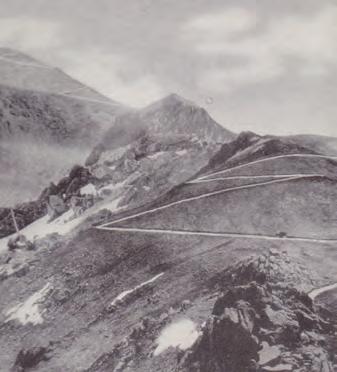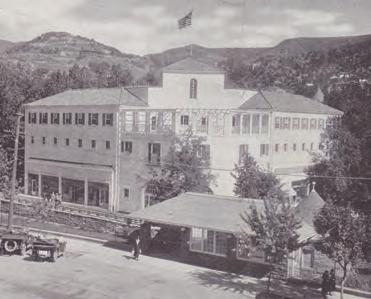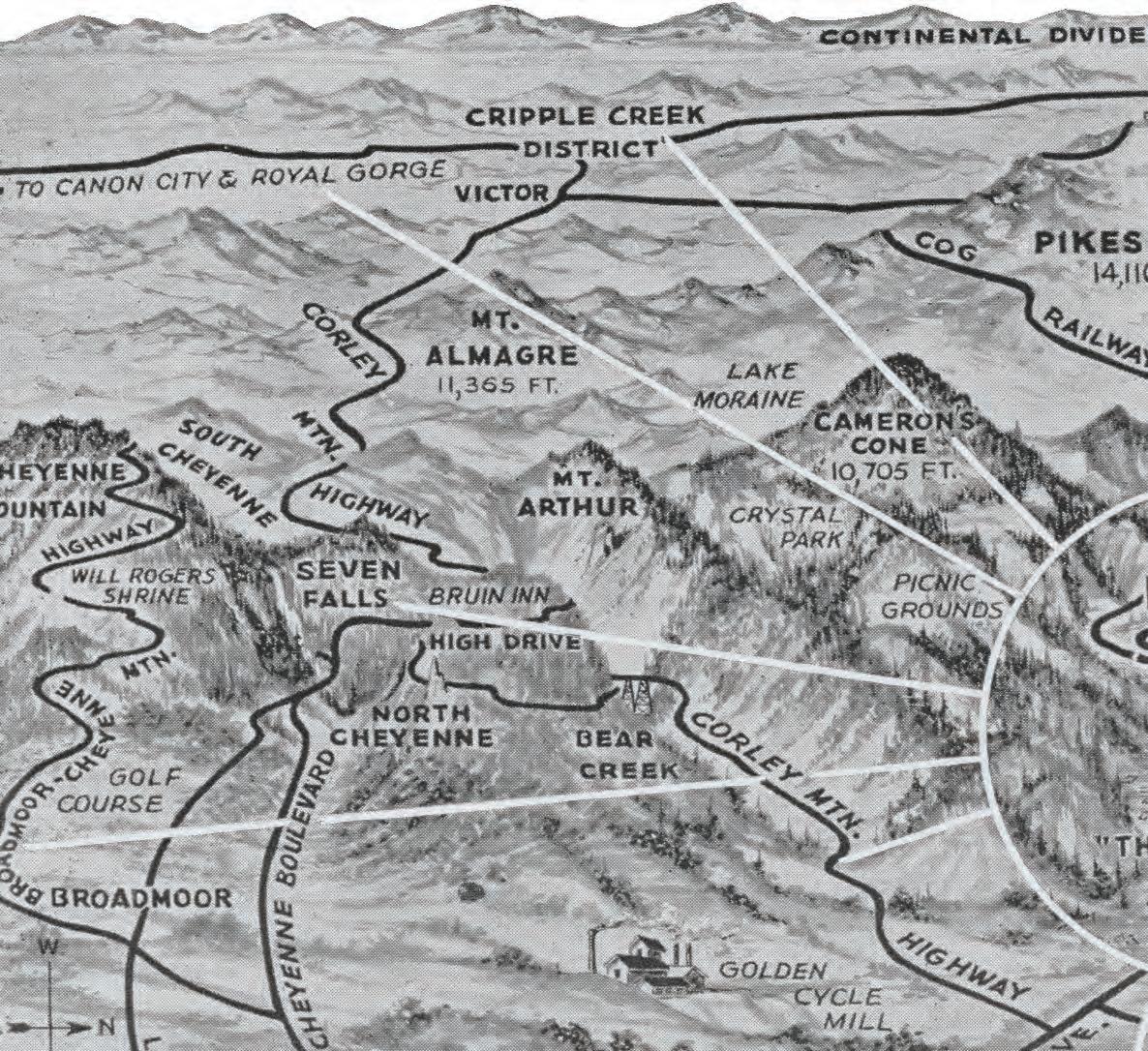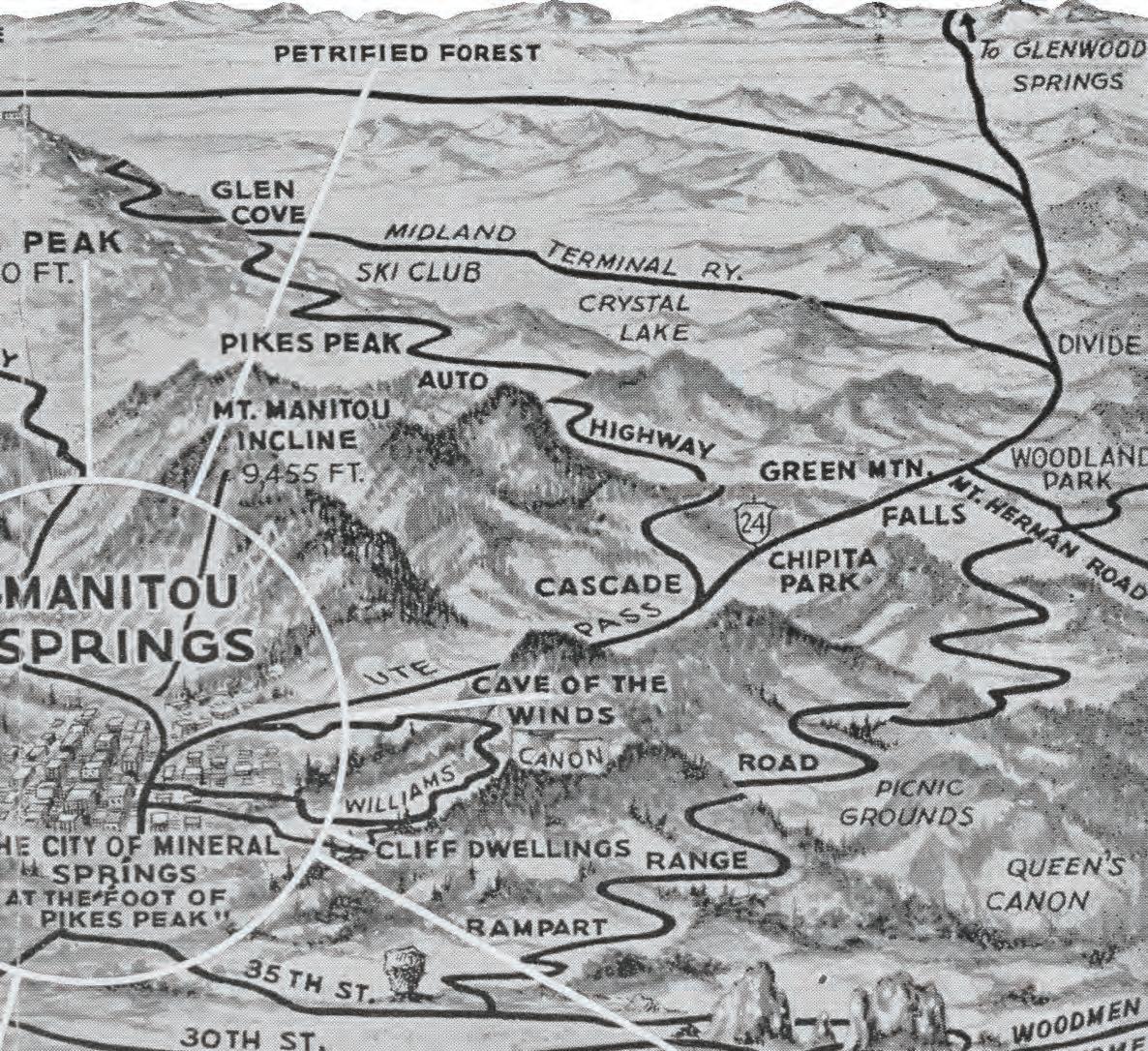
5 minute read
FOR THE HISTORY BUFFS
HISTORY COLORADO’S FIRST RESORT DESTINATION Long before European explorers discovered the Pikes Peak Region, the American Indians of the area knew of the bubbling soda and iron springs at the base of their sacred mountain Tava, now known as Pikes Peak. The nations of the Arapaho, Cheyenne, Kiowa, Comanche and Apache were all visitors from the eastern plains over the centuries of their migrations while the Utes considered the springs as part of their mountain homeland from which they originated and never left. Though enemies, most of these tribes would practice restraint around what they traditionally called the medicine springs. They drank the water filled with trace minerals and stomach-soothing soda and bathed in the skin-softening pools. As the Utes believed that every living thing had a spirit, there were tangible signs of gratitude or supplication left in and around the springs, including beads, weapons, clothing and fetishes.
EARLY EXPLORERS
Advertisement
The Spanish were the first Europeans to wander through the area, followed by French mountain men interested in fur trapping, who named the creek running next to the springs “Fountaine qui Bouille” or Boiling Fountain creek, now just Fountain Creek. With the Louisiana Purchase, the United States sent Lt. Zebulon Pike and company to explore the new territory in 1806. Though he would miss the springs entirely, he did report on his attempted climb of the mountain that carries his name today, bringing attention to the region. Dr. Edwin James, botanist of the 1820 Long Expedition, was the first American to climb the peak and write about the springs and their health benefits. Daniel Boone’s grandson, Col. A. G. Boone, visited the area for the health of his sons in 1833 and Capt. John C. Fremont, known as the “Pathfinder to the West,” reported on his scientific findings at these medicinal springs during his 1842 expedition. By far, the most widely read review of Manitou’s charms was penned by English officer and adventurer George Fredrick Ruxton, whose 1847 travels to Pikes Peak are chronicled in his book “Adventures in Mexico and the Rocky Mountains.” He described the picturesque location and the superior quality of the mineral water which “hissed and sparkled” in his cup, declaring it possessed of “that fresh, natural flavor which manufactured water can not impart.” Once the 59’ers started to flock to Colorado during the Pikes Peak or Bust gold rush, traffic increased dramatically as fortune hunters used the old Indian trail up Ute Pass as a route to the gold fields. By 1868 the Cheyenne and Arapaho were removed to reservations and the Utes met the same fate in 1879, separated from the sacred places of their ancestors. Between the gold rush and the founding of Manitou in 1871, many people had bought and sold the valley of the mineral springs. In 1868, Gen. William Jackson Palmer railroad engineer, and Dr. William A. Bell, physician, investigated the already famous medicine springs while on a Kansas and Pacific Railroad survey.
Palmer had a vision of a railroad from Colorado to Mexico and a European-style health resort built around the springs would be a tremendous drawing card for this endeavor.
SARATOGA OF THE WEST Originally named La Font, Palmer and Bell decided to take the advice of British collector and investor William Blackmore and re-title their new endeavor Manitou, after the Algonquin word for great spirit. The first hotel, the Manitou House, was completed in August of 1872 and the era of the health resorts began. Thousands of sufferers from tuberculosis flocked to the dry air and healing waters of Manitou and many other hotels, boarding houses and bath houses were soon built to accommodate them. Even through the economic recessions of 1873 and 1893, Manitou continued its steady growth to become one of America’s premier health destinations by 1900 The mineral water, around which the fame of the town was built, was so popular in the 1870’s that it was hauled by wagon to Denver and the hotels in Colorado Springs for those who couldn’t come to the source. Bath houses were constructed in 1873, 1883 and 1920 to avail the visitors who wanted a bath in an era when hotels only had one per a floor. Bottling of Manitou’s mineral waters was attempted early on, but the natural carbonation was so intense that the bottles regularly exploded. With the construction of the 1889 Manitou Mineral Water Co.’s bottling plant and its associated Colorado City Glass Factory, locally made and stronger bottles meant that the effervescent beverage could be shipped to dealers all over the country and abroad, further advertising the fame of its town of origin.


Well known celebrities of the era like President Ulysses S. Grant, Buffalo Bill, Gen. William Tecumseh Sherman, Thomas Edison and Lily Langtry mixed with captains of industry and their families in Manitou. Each of the seven grand hotels held a ball known as a “hop” on consecutive nights. Scenic drives, the Cog Railway up Pikes Peak and promenades from spring to spring, drinking the famous effervescent mineral water, were other popular pastimes. There were also thriving shops in the downtown area like curio stores, jewelry stores, photography studios and a great many doctor’s offices to cater to ailing visitors. After the turn of the last century, tourist began replacing the health seekers and attractions became even more important. The Cave of the Winds, the Cliff Dwellings, two incline railways and at least four popular dance halls all brought even more admirers to Manitou. This era of the automobile also ushered in a new way to travel and auto-court motels began to populate the east end of town along with more roads to the area like the Ocean to Ocean Highway.

THE DEPRESSION The Depression and WWII took a toll on this tourist economy and by the 1960’s, Manitou Springs, as it was now called, had seen better days. The 1980’s marked a turning point for the valley of the mineral springs. A National Historic District had been established, spurring restoration of many commercial buildings and older homes. An art colony began to grow and prosper with the formation of cooperatives. Traditional attractions were rediscovered and new amenities offered. In 1987 the Mineral Springs Foundation was organized and many of the traditional mineral springs are now accessible again and safe to enjoy.
For more information, visit the Manitou Springs Chamber of Commerce, Visitors Bureau & Office of Economic Development at 354 Manitou Avenue. 719-685-5089 or 800-642-2567
Email at: manitou@pikes-peak.com or visit www.manitousprings.org References for this article were taken from Cunningham, “Manitou, Saratoga of the West,” Daniels and McConnell, “The Springs of Manitou”, “American Indians of the Pikes Peak Region”, Celinda Kaelin and “Manitou Springs”, Deborah Harrison.











